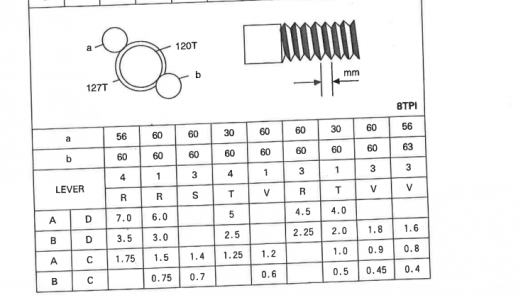- Joined
- Apr 23, 2018
- Messages
- 6,568
The spindle and the lead screw are LOCKED into proportion by gears. The lead screw and dial are LOCKED in a 1:1 relationship. All that matters is the engagement of the half nuts must occur at the same carriage position and the same dial position. You see, the other relationships are mechanically inseperable, locked in and fixed. The point is to select the ORIGIN, unitless and dimensionless, where all initial conditions (dial, carriage position) are initiated. The resulting movement is explicitly dependent on initial conditions. Replicate the initial conditions, replicate the movement.
You need to remember that every pattern is n+1. The initial condition is your +1, the iterations are n. You are looking at n using your example. Reorient your logic to establishing an origin, acknowledge the hard-locked relationship of the spindle and lead screw, and reconsider the exercise.
You aren't plunking a needle on a record, you are instead engaging mechanically liked systems. The initial condition, or the origin, is where everything lines up when you start. Repeat that, and the movement will repeat.
You need to remember that every pattern is n+1. The initial condition is your +1, the iterations are n. You are looking at n using your example. Reorient your logic to establishing an origin, acknowledge the hard-locked relationship of the spindle and lead screw, and reconsider the exercise.
You aren't plunking a needle on a record, you are instead engaging mechanically liked systems. The initial condition, or the origin, is where everything lines up when you start. Repeat that, and the movement will repeat.
Last edited:


